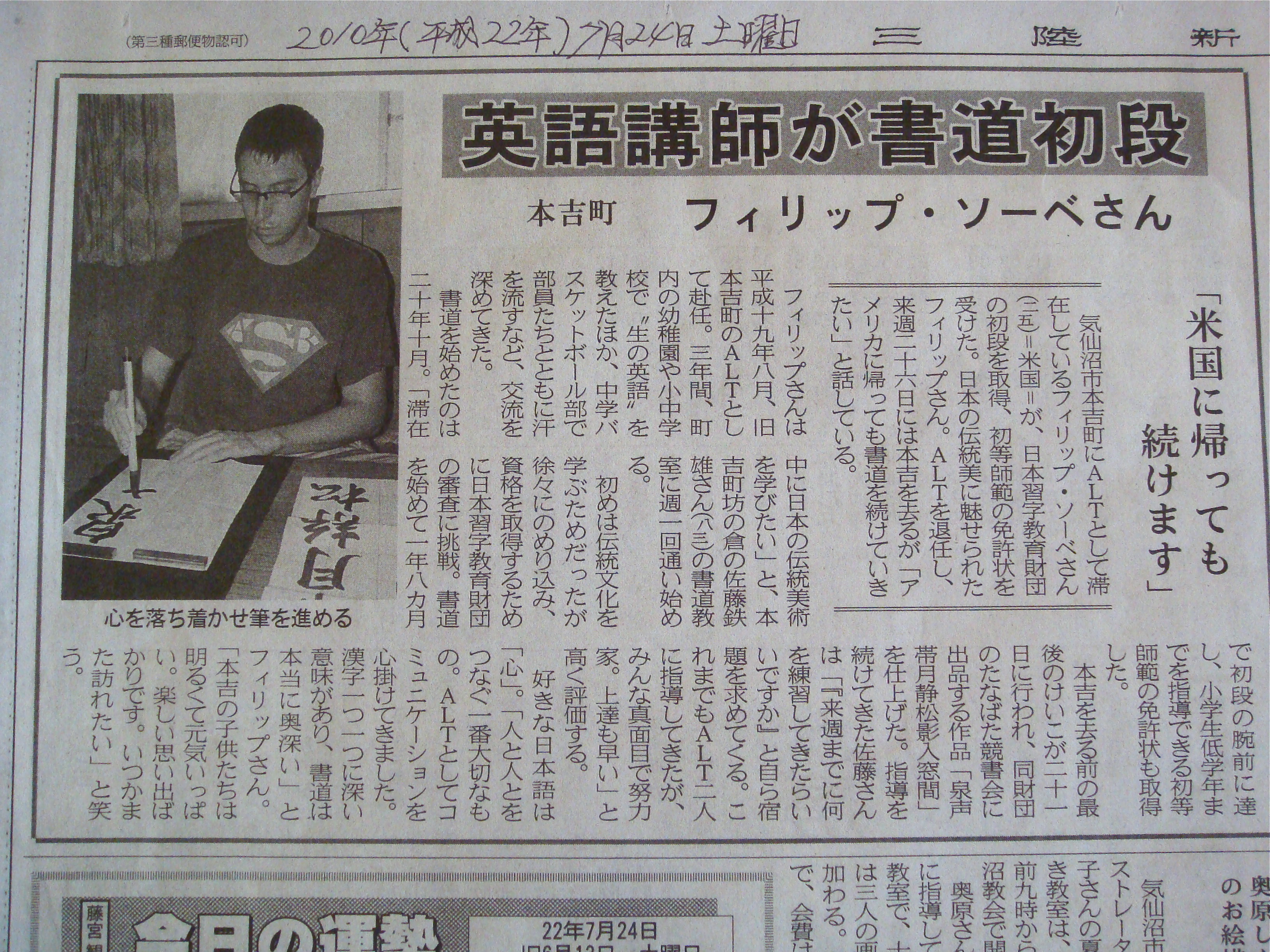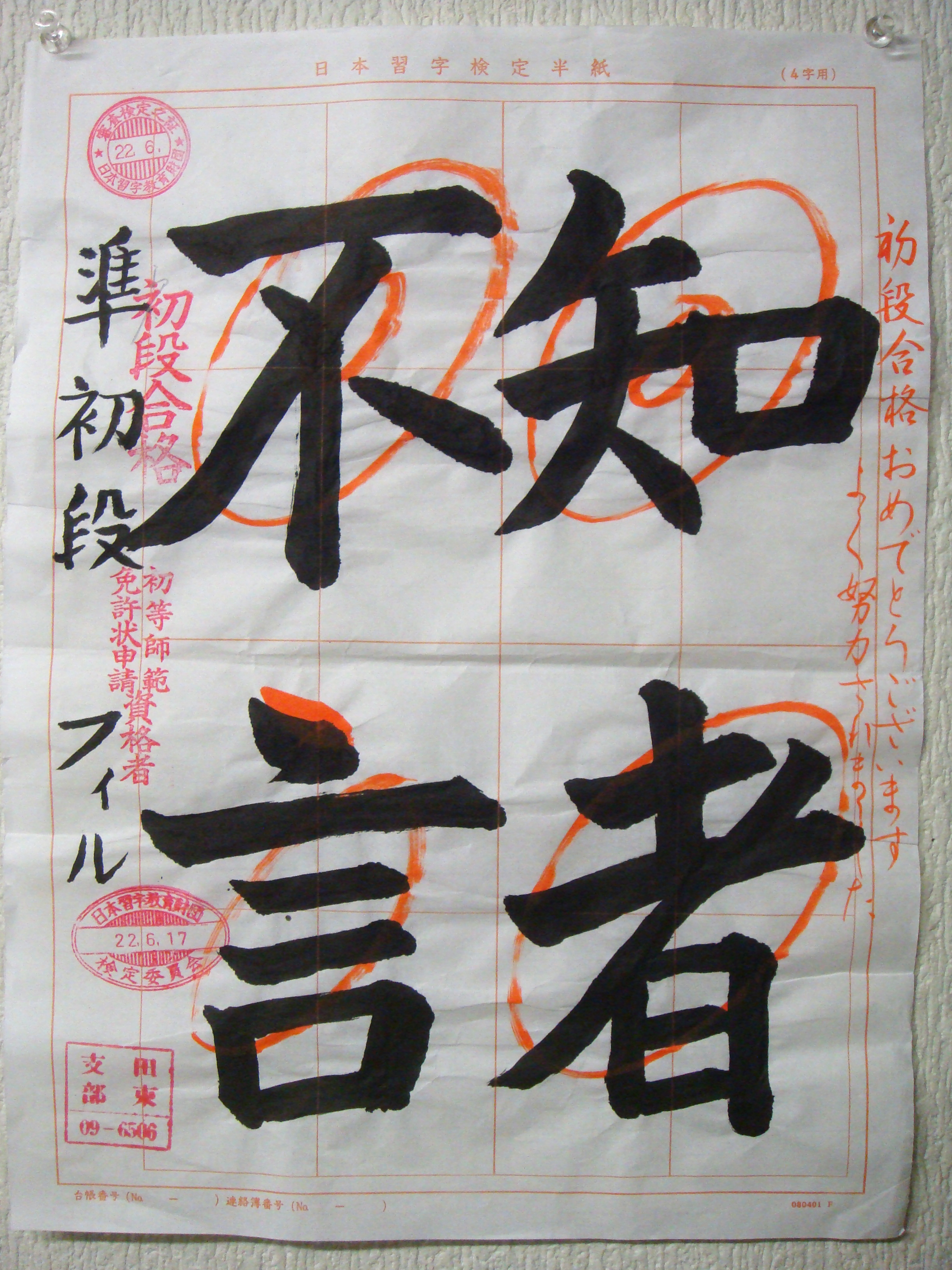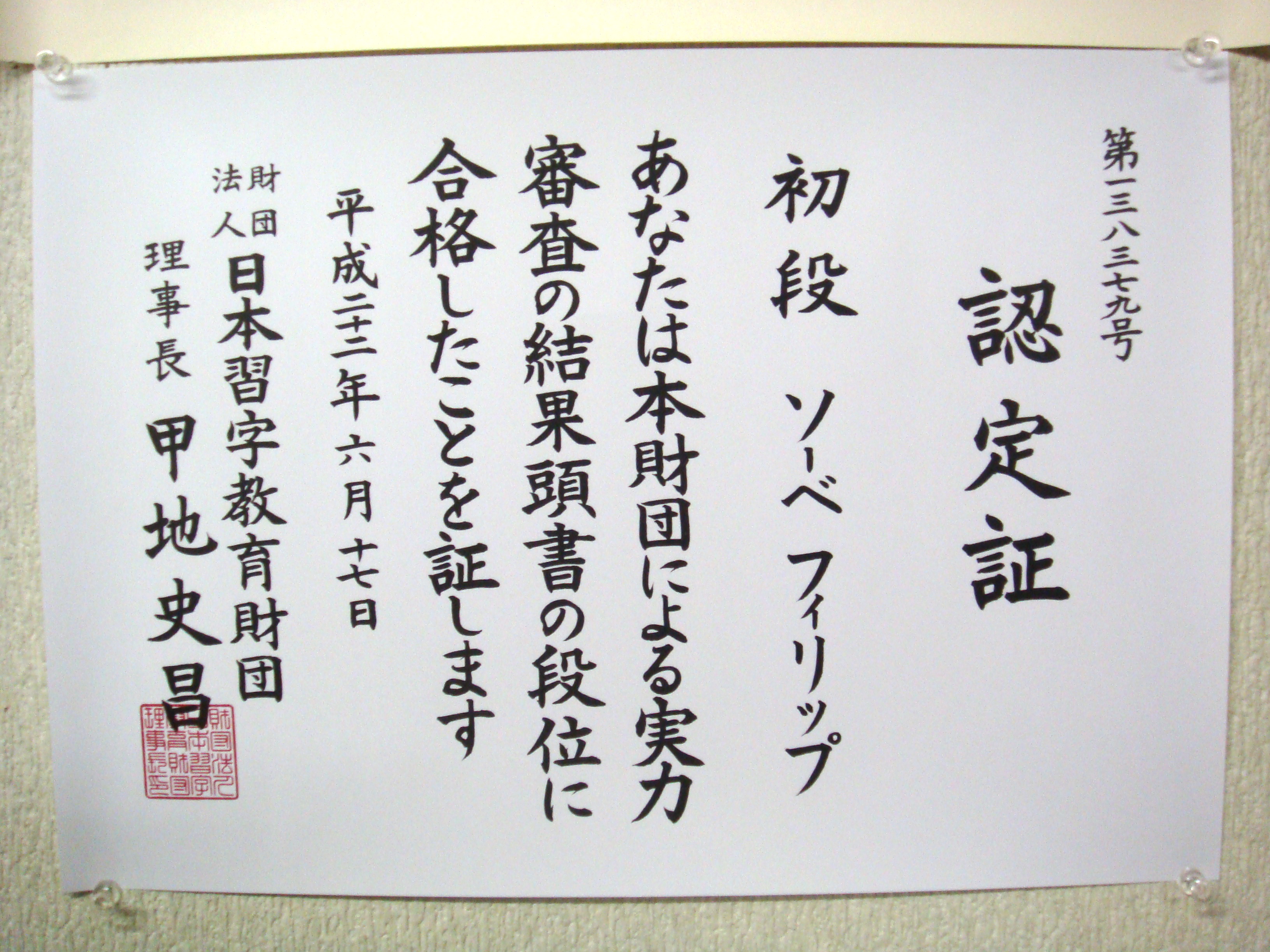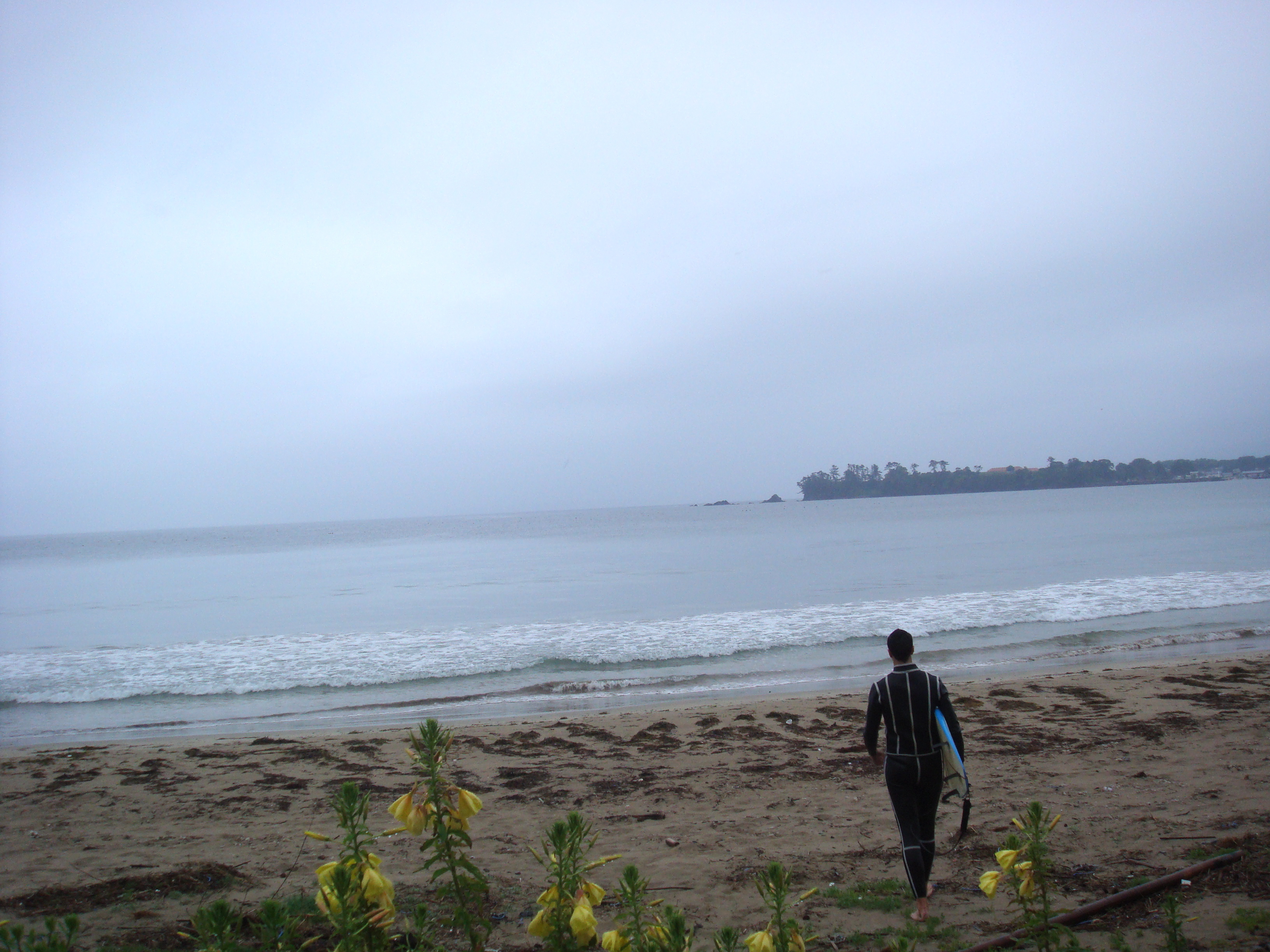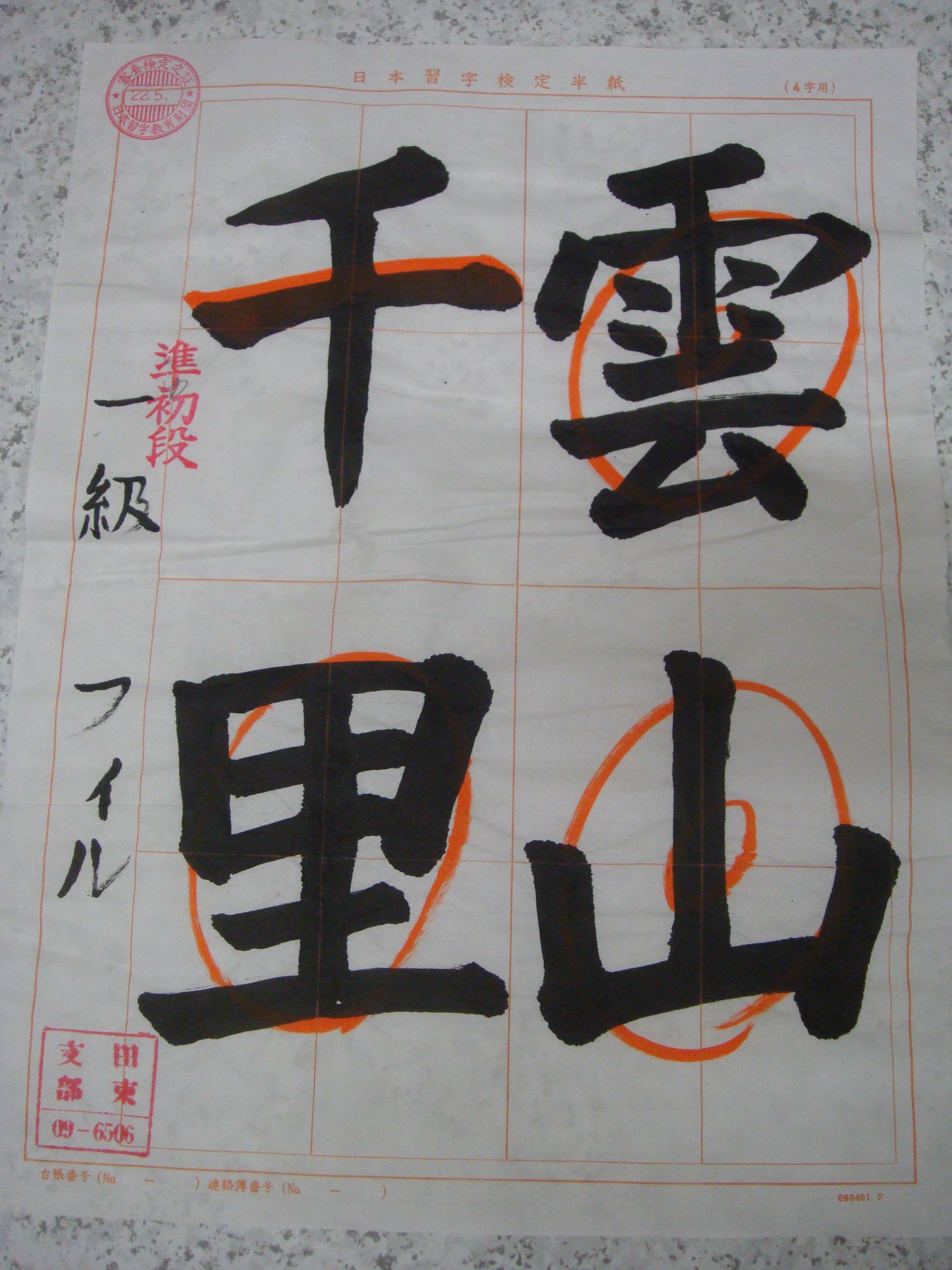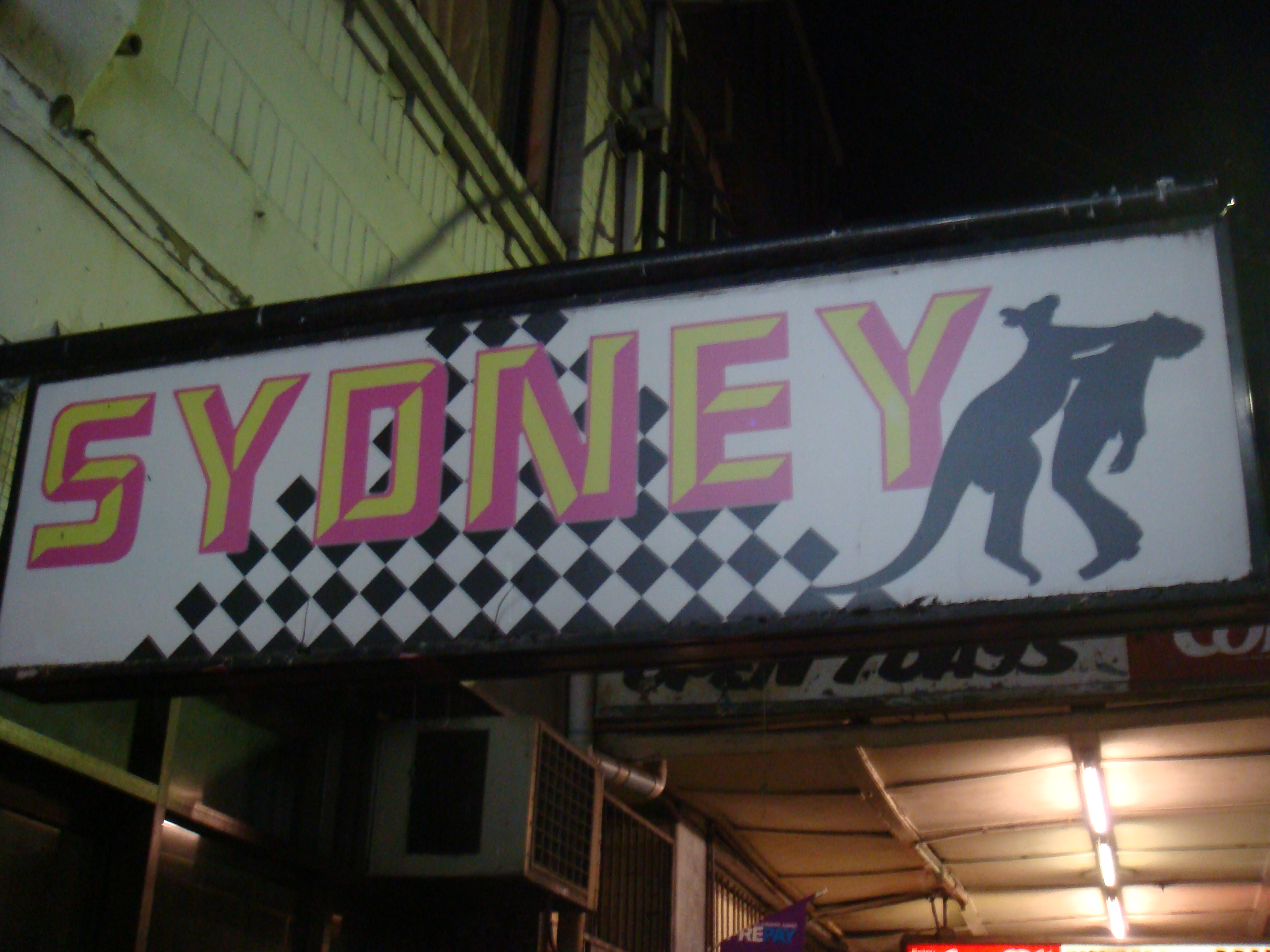Over the next few days and weeks I’ll be coming across the last of many things. There will be last classes, the last time visiting the three schools I work at, a last time in Motoyoshi, one last surf, my last calligraphy lesson, the last time driving my fantastic Honda Civic, and countless others. It’s a very sad time because after all that I’ve done and experienced, it is coming to an end. Will I come back to Motoyoshi? Of course I will, someday. But that could be in a year, or it could be in twenty years. Things will be different then. The time has come to say goodbye to what has been my life, my world for the past three years, and look forward to the next chapter in my life. But I can’t just say goodbye anyway I please- showing respect is of utmost importance. And in Japan that means giving lots of speeches, gifts, and having a few formal farewell drinking parties.
The Speeches
There are going to be many speeches. Two speeches are given at each school; one to the entire student body and one in the staffroom to all of your colleagues. There is also a speech for the people in charge of you at the board of education. There is a farewell party with each school and most of your social circles, which all require a speech. So why not just use the same speech? While it might be tempting to try to use the same speech over and over, there are several reasons why this is not a good idea. Different speeches, using varying levels of polite language will convey different (but very important) levels of respect. You’re not going to want to come off sounding stiff and formal in front of a room full of junior high students, the same way you don’t want to sound like you’re talking with your best friend when addressing your school principal.
The Gifts
It wouldn’t be Japan without some sort of gift-giving taking place. When you go on a trip it is standard to bring back a little gift for your co-workers. The gifts say I’m sorry for inconveniencing you with the time I took off of work. Leaving the workplace is no different. It is proper decorum to bring a little gift for your colleagues. Sweets and snacks are the best for this purpose. There are packages of sweets specifically made for these occasions and they are available anywhere throughout the country.
There are also the non-obligatory gifts that you want to give to those who you have gotten close to or those who have really helped you out a lot. People like your supervisor, landlord, English teachers who you’ve worked directly with on a daily basis, and students you’ve gotten to know well. A picture with a short message is a good idea. A handwritten letter is also fitting for those who’ve helped you out a bit more.
The Enkais
An enkai is a Japanese drinking party. There are several occasions where it is standard practice to have one of these, including when saying farewell to a colleague or friend. This type of enkai is called a soubetsukai. There will be a soubetsukai with probably every social circle you are a part of in Japan. There is an soubetsukai with each school staff room, your board of education, past co-workers, other foreign assistant language teachers, and any sports or hobby groups you have been a part of. What happens at these parties? You sit at the head of the table and are roasted in Japanese. Not really. Actually you have a nice dinner, people thank you for being around and all you’ve done. They’ll give you a little going away present (hopefully something that will fit in your luggage to take home), and then you’ll give your speech. All the while people are drinking, often heavily to make use of the dinner’s two-hour nomihodai (all-you-can-drink). In the end it turns out to be a relaxed and fun night, a great way to say goodbye the Japanese way.

